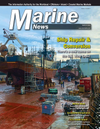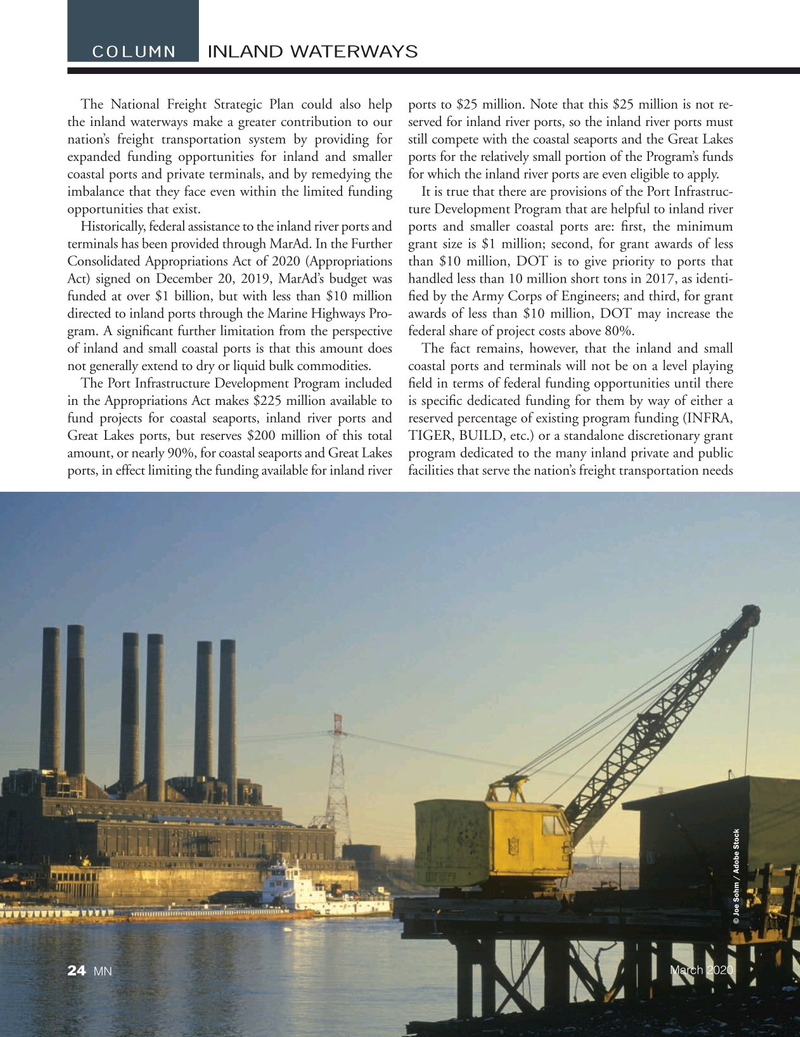
Page 24: of Marine News Magazine (March 2020)
Workboat Conversion & Repair
Read this page in Pdf, Flash or Html5 edition of March 2020 Marine News Magazine
COLUMN INLAND WATERWAYS
The National Freight Strategic Plan could also help ports to $25 million. Note that this $25 million is not re- the inland waterways make a greater contribution to our served for inland river ports, so the inland river ports must nation’s freight transportation system by providing for still compete with the coastal seaports and the Great Lakes expanded funding opportunities for inland and smaller ports for the relatively small portion of the Program’s funds coastal ports and private terminals, and by remedying the for which the inland river ports are even eligible to apply.
imbalance that they face even within the limited funding It is true that there are provisions of the Port Infrastruc- opportunities that exist. ture Development Program that are helpful to inland river
Historically, federal assistance to the inland river ports and ports and smaller coastal ports are: ? rst, the minimum terminals has been provided through MarAd. In the Further grant size is $1 million; second, for grant awards of less
Consolidated Appropriations Act of 2020 (Appropriations than $10 million, DOT is to give priority to ports that
Act) signed on December 20, 2019, MarAd’s budget was handled less than 10 million short tons in 2017, as identi- funded at over $1 billion, but with less than $10 million ? ed by the Army Corps of Engineers; and third, for grant directed to inland ports through the Marine Highways Pro- awards of less than $10 million, DOT may increase the gram. A signi? cant further limitation from the perspective federal share of project costs above 80%.
of inland and small coastal ports is that this amount does The fact remains, however, that the inland and small not generally extend to dry or liquid bulk commodities. coastal ports and terminals will not be on a level playing
The Port Infrastructure Development Program included ? eld in terms of federal funding opportunities until there in the Appropriations Act makes $225 million available to is speci? c dedicated funding for them by way of either a fund projects for coastal seaports, inland river ports and reserved percentage of existing program funding (INFRA,
Great Lakes ports, but reserves $200 million of this total TIGER, BUILD, etc.) or a standalone discretionary grant amount, or nearly 90%, for coastal seaports and Great Lakes program dedicated to the many inland private and public ports, in effect limiting the funding available for inland river facilities that serve the nation’s freight transportation needs © Joe Sohm / Adobe Stock
March 2020 24 MN

 23
23

 25
25
